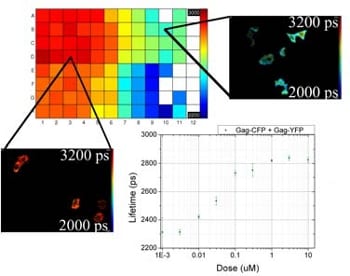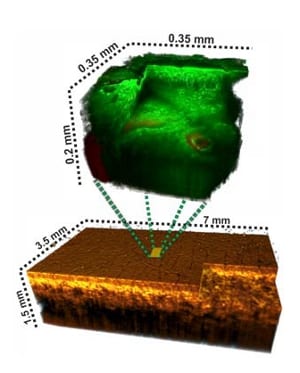A new straightforward method, based on nonlinear photoperturbation, enables monitoring the response of nuclear proteins to DNA damage in time and space.

A better chalcopyrite for optical oscillation
Use of a defect chalcopyrite might become practical at pump levels sufficiently lower than the optical damage threshold.

A better look into cerebrospinal fluid
New setup for ex vivo detection reveals low concentrations of biomarkers such as circulating tumor cells, bacteria and nanoparticles in cerebrospinal fluid.

Plate reader developed for drug discovery
A new automated fluorescence lifetime imaging plate reader has been used to study aggregation of HIV-1 Gag proteins.

A fruitful combination – two optical processes combine for new 3D skin imaging technique
Combining two methods into a single platform opens up new possibilities for non-invasive 3D skin imaging.

Subwavelength interference patterns for optical transmission
Vladimir P. Drachev has studied a uniaxial hyperbolic metamaterial for its use in optical communications systems.

Using second-harmonic generation for a closer look at collagen
From molecular structure to tissue architecture: second-harmonic generation (SHG) microscopy is an ideal tool for probing collagen organization.

A deep look into the body with Raman spectroscopy
Recent advances in the field of Raman spectroscopy have paved the way for new deep non-invasive medical diagnosis methods.

A Snapshot of Plasmonic Sensors
Modern nanofabrication schemes and other methodological advances enable new fascinating possibilities in the emerging area of biosensing.

Better contrast between good and bad
Alexander Poellinger from Charité in Berline researchers the potential of near-infrared imaging using optical contrast agents for diagnosing breast cancer.
